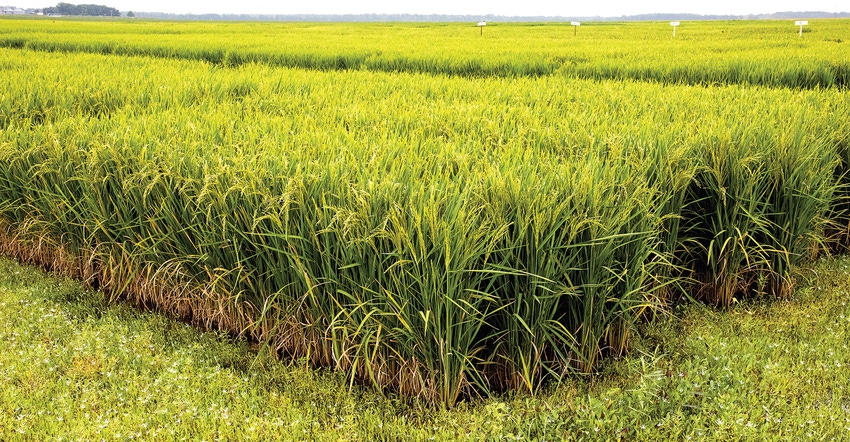
ARoma 17, a new aromatic long-grain rice from the University of Arkansas System Division of Agriculture, offers exceptional rough rice yields with good milling yields.
Aromatic rices are fragrant varieties that originated in southeast Asia. Jasmine-type rice is especially popular in Thailand as well as a growing market of American consumers. They are prized for their light, fluffy texture, mellow nutty flavor and floral scent.
Research associate Debra Ahrent Wisdom said ARoma 17 fills a market niche for consumers who enjoy jasmine-type aromatic rices.
Wisdom said Arkansas’ climate doesn’t favor growing Thai jasmine rice. ARoma 17 offers a jasmine-type rice adapted to Arkansas growing conditions for rice producers who want to serve that consumer market.
“ARoma 17 is not intended for the mainstream rice market and growers should make arrangements with aromatic rice markets before planting,” said Nathan McKinney, assistant director of the Arkansas Agricultural Experiment Station and interim director of the Rice Research and Extension Center at Stuttgart, Ark.
ARoma 17 was developed from a cross made at the Rice Research and Extension Center in 2009 between Jazzman — a Louisiana variety — and PI 597046, germplasm donated to the USDA Plant Introduction and Research program by the International Rice Research Institute in 1994. The resulting cross was selected for advancement toward commercial release in 2012.
It is the second aromatic rice from the Division of Agriculture rice breeding program, said Karen Moldenhauer, professor of rice breeding and holder of the Arkansas Rice Industry Chair in Variety Development. The first Arkansas aromatic rice was JES, released in 2009, Moldenhauer said.
Related video: Arkansas Rice Breeding and Research
ARoma 17 averaged 163 bushels per acre over four years in the Arkansas Rice Performance Trials, with 173 bushels per acre in the 2014 state trials. Its four-year average in the multi-state Uniform Regional Rice Nursery was 172 bushels per acre.
Wisdom said milling yields are a little better than Wells. In three years of Arkansas Rice Performance Trials, ARoma 17 averaged 67 percent whole kernel and 71 percent total milled rice.
The plant averages 39.8 inches in height, about an inch shorter than Wells, and matures in about 86 days, approximately the same as Wells. Its grain weight and size are similar to Wells.
It has high straw strength and has better lodging resistance than Wells, Wisdom said.
ARoma 17 is moderately susceptible to blast and sheath blight, moderately resistant to bacterial panicle blight. Under high rates of nitrogen fertilization, it is susceptible to false smut.
Breeder and foundation seed for ARoma 17 will be maintained by the Division of Agriculture’s Foundation Seed Program at the Rice Research and Extension Center. The Arkansas Agricultural Experiment Station will direct market the variety in late 2018 to rice producers, but foundation seed will not be available for seed producers.
About the Author(s)
You May Also Like






